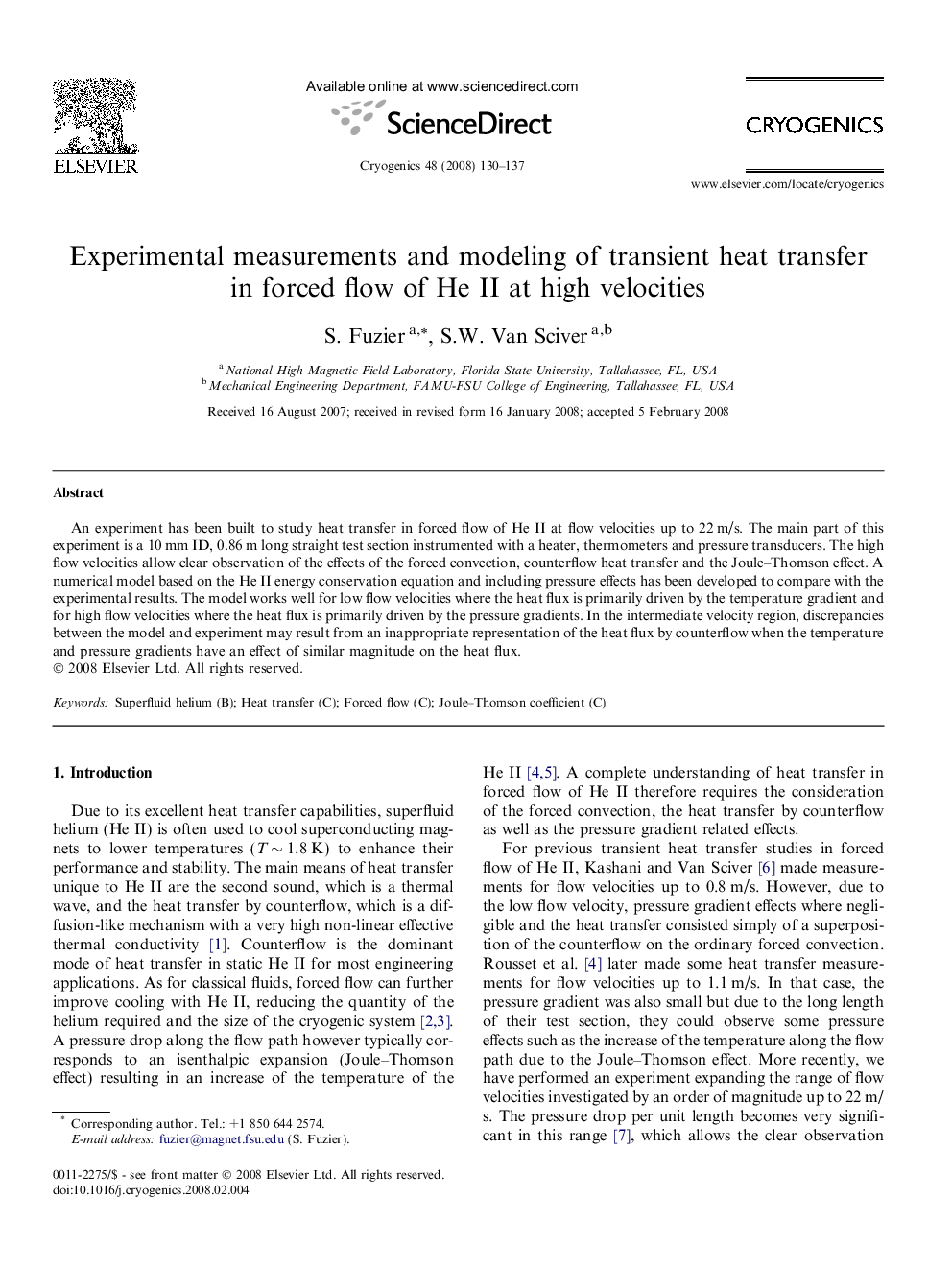| Article ID | Journal | Published Year | Pages | File Type |
|---|---|---|---|---|
| 1508403 | Cryogenics | 2008 | 8 Pages |
Abstract
An experiment has been built to study heat transfer in forced flow of He II at flow velocities up to 22Â m/s. The main part of this experiment is a 10Â mm ID, 0.86Â m long straight test section instrumented with a heater, thermometers and pressure transducers. The high flow velocities allow clear observation of the effects of the forced convection, counterflow heat transfer and the Joule-Thomson effect. A numerical model based on the He II energy conservation equation and including pressure effects has been developed to compare with the experimental results. The model works well for low flow velocities where the heat flux is primarily driven by the temperature gradient and for high flow velocities where the heat flux is primarily driven by the pressure gradients. In the intermediate velocity region, discrepancies between the model and experiment may result from an inappropriate representation of the heat flux by counterflow when the temperature and pressure gradients have an effect of similar magnitude on the heat flux.
Related Topics
Physical Sciences and Engineering
Materials Science
Electronic, Optical and Magnetic Materials
Authors
S. Fuzier, S.W. Van Sciver,
